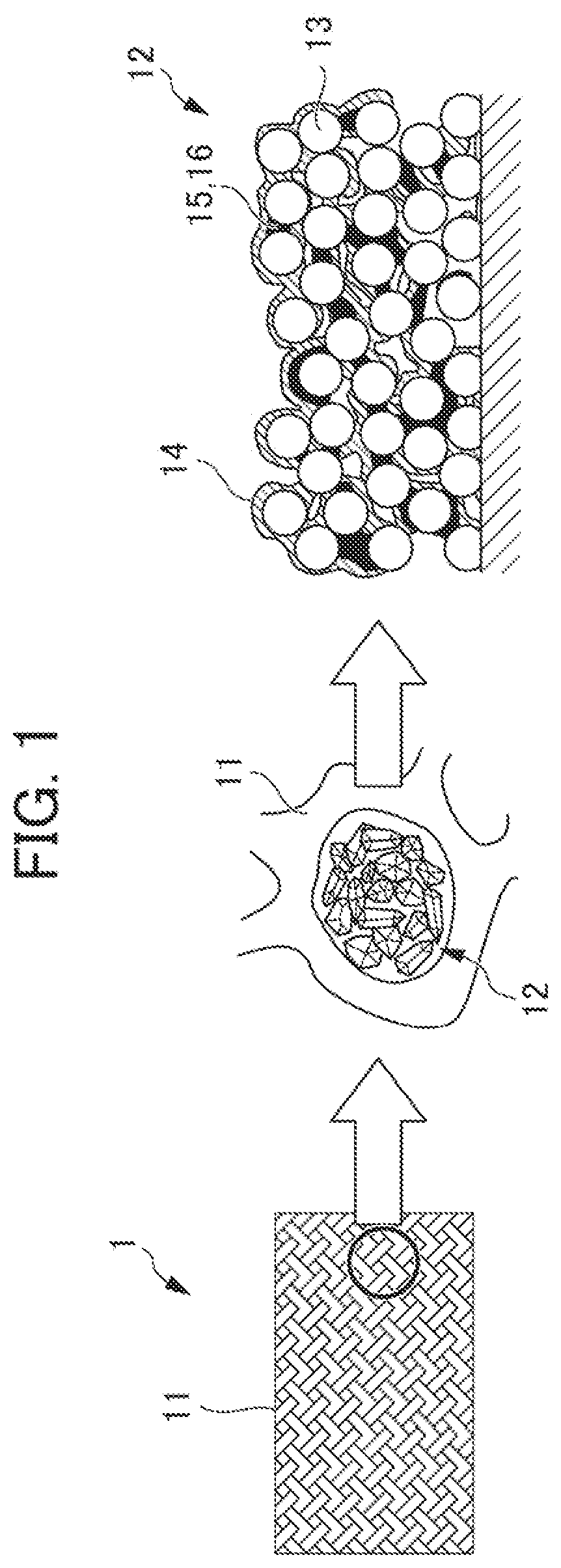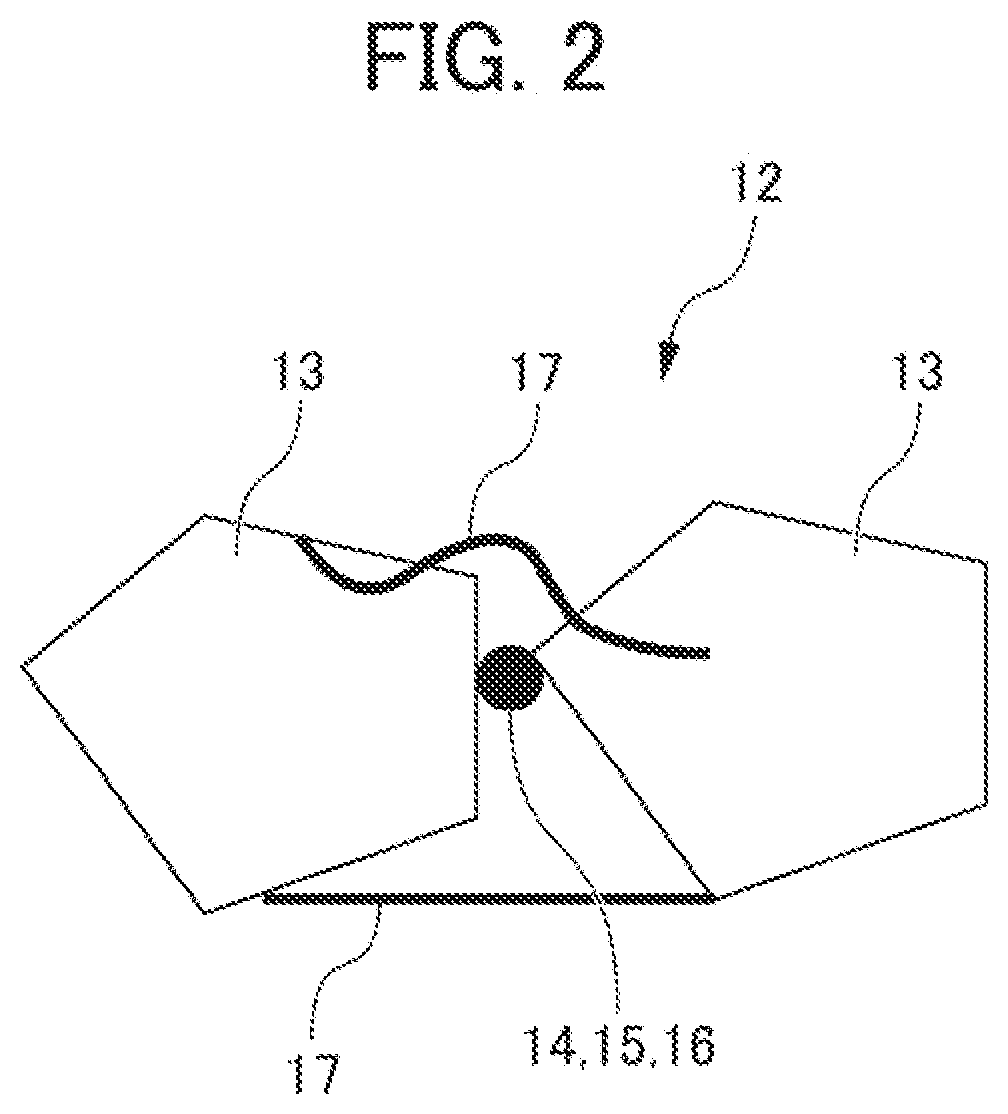Negative electrode for nonaqueous electrolyte secondary batteries and nonaqueous electrolyte secondary battery including the same
a technology of nonaqueous electrolyte and secondary batteries, which is applied in the direction of active material electrodes, cell components, electrical equipment, etc., can solve the problems of limited amount of negative electrode active materials per unit area, difficult to produce high-accuracy negative electrodes, and limited thickness of negative electrodes in the production of negative electrodes. , to achieve the effect of suppressing structural deterioration of negative electrodes, preventing breaking of conductive paths, and suppressing durability deteriora
- Summary
- Abstract
- Description
- Claims
- Application Information
AI Technical Summary
Benefits of technology
Problems solved by technology
Method used
Image
Examples
example 1
Production of Negative Electrode
[0093]A slurry including silicon (Si, particle diameter 1 to 3 mm) as the negative electrode active material, carbon black (CB) as the conductive additive, polyvinylidene difluoride (PVdF) as the binder, and cellulose nanofiber (CNF) as the fibrous material was prepared. The prepared slurry was then packed in “Nickel Celmet” (registered trademark) manufactured by Sumitomo Electric Industries, Ltd. as the current collector, dried and then treated with adjusted pressure to obtain a negative electrode layer precursor.
[0094]A 10 mass % aqueous solution of Na2O.3SiO2 was prepared as skeleton forming agent liquid including the skeleton forming agent and water. The negative electrode layer precursor obtained above was immersed in the prepared skeleton forming agent liquid. After immersion, the negative electrode precursor was heated and dried at 160° C. to obtain a negative electrode having a negative electrode layer formed therein.
Production of Positive Ele...
examples 2 , 3
Examples 2, 3
[0098]The lithium-ion secondary batteries in Examples 2 and 3 were obtained in the same manner as in Example 1 except that the composition of the negative electrode was changed as shown in Table 1. In Example 2, vapor grown carbon nanofiber (VGCF) was used as the fibrous material.
PUM
| Property | Measurement | Unit |
|---|---|---|
| aspect ratio | aaaaa | aaaaa |
| thickness | aaaaa | aaaaa |
| thickness | aaaaa | aaaaa |
Abstract
Description
Claims
Application Information
 Login to View More
Login to View More - R&D
- Intellectual Property
- Life Sciences
- Materials
- Tech Scout
- Unparalleled Data Quality
- Higher Quality Content
- 60% Fewer Hallucinations
Browse by: Latest US Patents, China's latest patents, Technical Efficacy Thesaurus, Application Domain, Technology Topic, Popular Technical Reports.
© 2025 PatSnap. All rights reserved.Legal|Privacy policy|Modern Slavery Act Transparency Statement|Sitemap|About US| Contact US: help@patsnap.com


